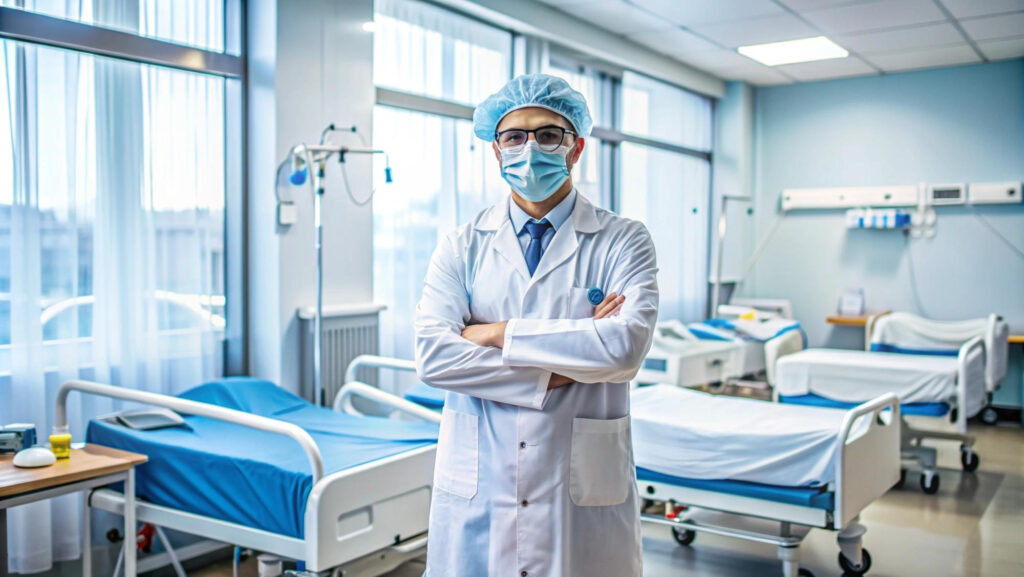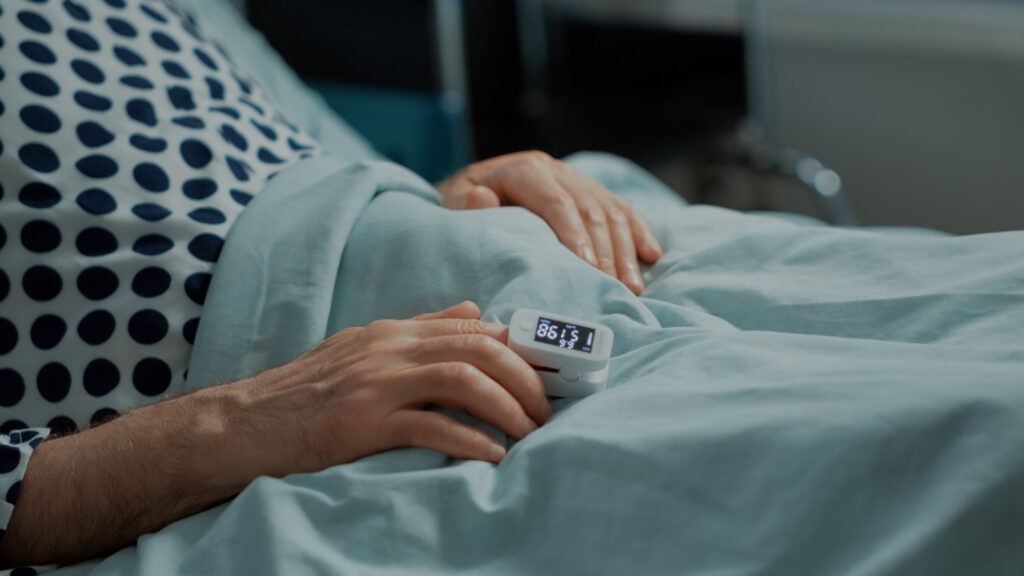The landscape of healthcare is undergoing a significant transformation, driven by innovative approaches like the Hospital-at-Home model and Remote Patient Monitoring (RPM). This shift reflects a broader movement towards patient-centered care, aiming to make healthcare more accessible, efficient, and tailored to individual needs. By leveraging advanced technology, these models are redefining traditional care practices, offering new solutions to age-old challenges such as hospital overcrowding, high costs, and patient discomfort. At the heart of this transformation is RPM, a technology-driven approach that allows for continuous, real-time monitoring of patients outside conventional clinical settings. This blog explores how RPM, in conjunction with the Hospital-at-Home model, is reshaping healthcare delivery, enhancing patient outcomes, and improving operational efficiency. From addressing the urgent needs highlighted during the COVID-19 pandemic to providing personalized care for chronic conditions, RPM is poised to revolutionize how we think about and deliver healthcare.
Assessing the Shortcomings of Traditional Healthcare Delivery

- Accessibility Barriers
Traditional hospital-based care often presents significant hurdles for patients, particularly those residing in rural or underserved areas. Geographical distances, limited transportation options, and a scarcity of healthcare providers in these regions can collectively create substantial barriers to accessing essential medical services. Consequently, individuals in these communities may experience delayed or inadequate care, leading to worsened health outcomes. - Economic Burden
Hospitalization can impose a considerable financial strain on patients and healthcare systems alike. The costs associated with inpatient care, including medical procedures, medications, and extended stays, can be exorbitant. For many individuals, these expenses can lead to financial hardship, bankruptcy, or even deferral of necessary medical treatments. Moreover, the overall cost of healthcare is inflated by the reliance on hospital-based care, placing immense pressure on healthcare budgets. - Compromised Patient Experience
Hospitalization can be a disruptive and stressful experience for patients. The unfamiliar environment, separation from loved ones, and potential exposure to infections can negatively impact a patient’s physical and emotional well-being. Additionally, hospital stays often involve inconvenience, such as restricted diets, limited mobility, and dependence on others for daily tasks. These factors can diminish a patient’s quality of life and hinder their recovery process.
Tech is Your New Nurse: How Gadgets Track Your Health

The critical role of RPM became particularly evident during the COVID-19 pandemic. Oxygen levels, a vital health metric, were intensely monitored due to the surge in patients requiring respiratory support. The shortage of hospital beds and oxygen cylinders highlighted the need for continuous, real-time monitoring of essential parameters. Advanced RPM systems are now making this vision a reality.
RPM involves a range of technology-driven devices that capture physiological parameters and transmit them to healthcare platforms in real-time. This technology functions outside of traditional clinical settings, providing ongoing monitoring and immediate data transmission. Common applications of RPM include:
- Blood Glucose Monitoring: Essential for managing diabetes, RPM devices track blood glucose levels and alert patients and providers to potential issues.
- Blood Pressure and Heart Rate Tracking: RPM systems monitor cardiovascular health, enabling timely interventions for conditions such as hypertension and heart disease.
- Pulse Rate, Body Temperature, and Oxygen Levels: These metrics are crucial for assessing overall health and detecting potential emergencies.
- Respiratory Rates and Surveillance: RPM tracks breathing patterns and supports monitoring for mental health conditions or disabilities.
- Substance Abuse Rehabilitation: RPM aids in tracking recovery progress and adherence to treatment plans.
Reach of Remote Patient Monitoring
Remote Patient Monitoring (RPM) systems are sophisticated digital health solutions that employ a systematic approach to improving patient care. This approach is underpinned by five fundamental processes. The first step is data gathering. This involves the collection of health data from patients using a variety of devices, such as wearable sensors, blood pressure monitors, and smart scales. These devices continuously or intermittently capture vital signs, biometric data, and other relevant health metrics. The collected data is then transmitted to a secure healthcare platform, a process known as data transmission.
To ensure patient privacy and data integrity, shielding this information from unauthorized access is paramount. Robust security measures, including encryption and access controls, are implemented to protect sensitive health data. The next crucial step involves analyzing the collected data using advanced algorithms and machine learning techniques. This process uncovers patterns, trends, and anomalies that can provide valuable insights into a patient’s health status. By identifying potential health risks or deteriorating conditions early on, healthcare providers can proactively act to implement necessary interventions. These interventions may include medication adjustments, lifestyle modifications, or scheduling follow-up appointments. RPM systems have the potential to revolutionize healthcare delivery by enabling continuous monitoring, early detection of health issues, and improved patient outcomes. By empowering patients to take an active role in their health management and providing healthcare providers with real-time data, RPM systems are transforming the way care is delivered.
Additional Considerations
- Patient Engagement: Effective RPM programs require active patient participation. Education and support are essential for ensuring patient adherence to monitoring protocols.
- Data Interoperability: The ability to seamlessly exchange and integrate data from different RPM devices and healthcare systems is crucial for comprehensive patient care.
- Regulatory Compliance: RPM systems must adhere to strict data privacy and security regulations to protect patient information.
- Clinical Integration: Successful implementation of RPM requires close collaboration between healthcare providers, patients, and technology experts.
- Cost-Effectiveness: Demonstrating the cost-effectiveness of RPM programs is essential for widespread adoption.
RPM: It’s a Game-Changer
RPM offers numerous advantages that extend beyond traditional care models
- Chill at Home, Stay Healthy: RPM lets you kick it at home and still get top-notch care. No more hospital drama or long commutes.
- Early Alert System: Think of RPM as your health’s personal alarm. It spots red flags before they become a major issue, saving you from stressing out.
- Own Your Health: RPM puts you in control. Check your health stats, track your progress, and be your own health boss.
- Less Stress for Docs: With RPM, doctors get a heads up on your health. This means less paperwork and more time for chill vibes.
- Chronic Illnesses? No Prob: Managing diabetes, heart stuff, or breathing issues? RPM is your new BFF, helping you stay on top of things.
- Bounce Back Faster: Recovering from surgery or an illness? RPM helps you heal quicker and stronger, so you can get back to your life.
Case Summary : Transforming Healthcare with CareHQ: The Future of Remote Care
In the rapidly advancing realm of healthcare, Remote Patient Monitoring (RPM) has proven to be a pivotal innovation, enhancing the connection between patients and healthcare providers. CareHQ, Simelabs’ cutting-edge RPM solution, stands out as a prime example of this digital evolution. Designed to address the challenges of traditional care models, CareHQ combines both software and hardware to offer a comprehensive monitoring system that is transforming patient management. CareHQ features real-time, centralized monitoring dashboards that track essential patient vitals such as Blood Pressure, Blood Glucose, SpO2, Temperature, and Heart Rate. Its interactive bot captures these vital signs, while supplementary tools like a pill dispenser, care cam, and report generation capabilities further enhance patient care. The system’s alarm and alert functionalities ensure timely responses to critical situations, improving overall patient outcomes and reducing hospitalization expenses.
By leveraging AI-based insights and an intuitive software interface, CareHQ promotes proactive and personalized patient care, increases operational efficiency, and fosters collaboration among patients, doctors, and caregivers. This seamless integration supports better communication and shared decision-making, leading to heightened patient satisfaction and enhanced health outcomes. Additionally, CareHQ’s benefits extend to insurance providers, pharmaceutical companies, assisted living facilities, and hospitals, making it a valuable asset across the healthcare landscape. Through its innovative approach, CareHQ is setting a new standard for remote patient monitoring, bridging gaps in care, and driving the future of healthcare delivery.
